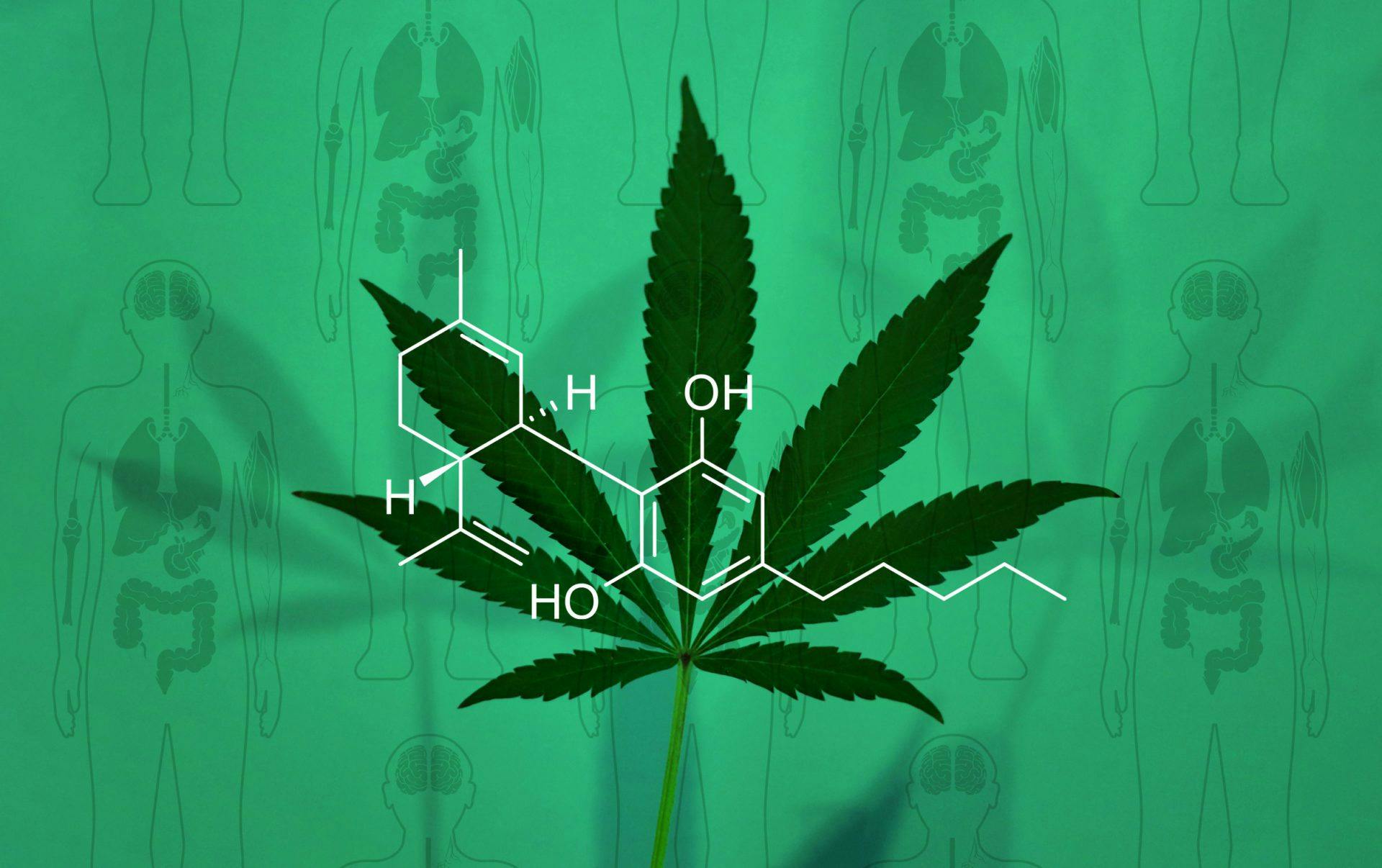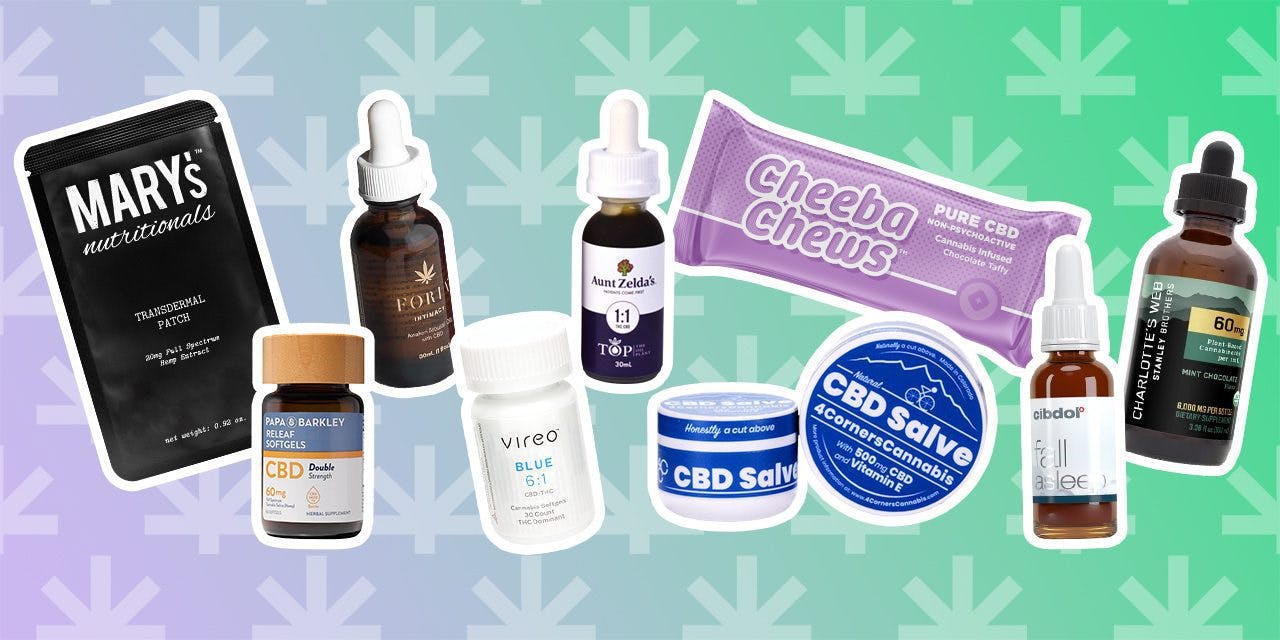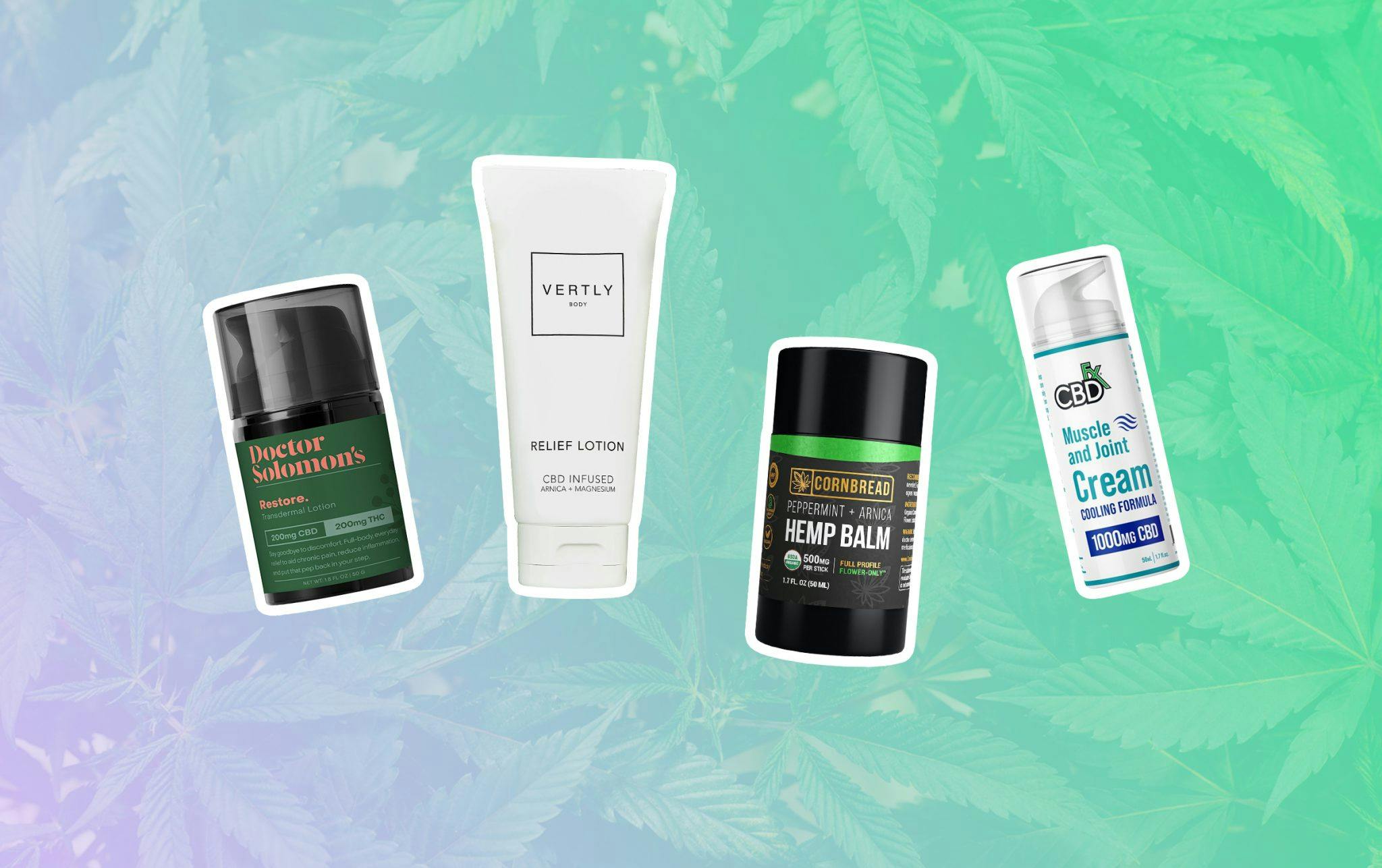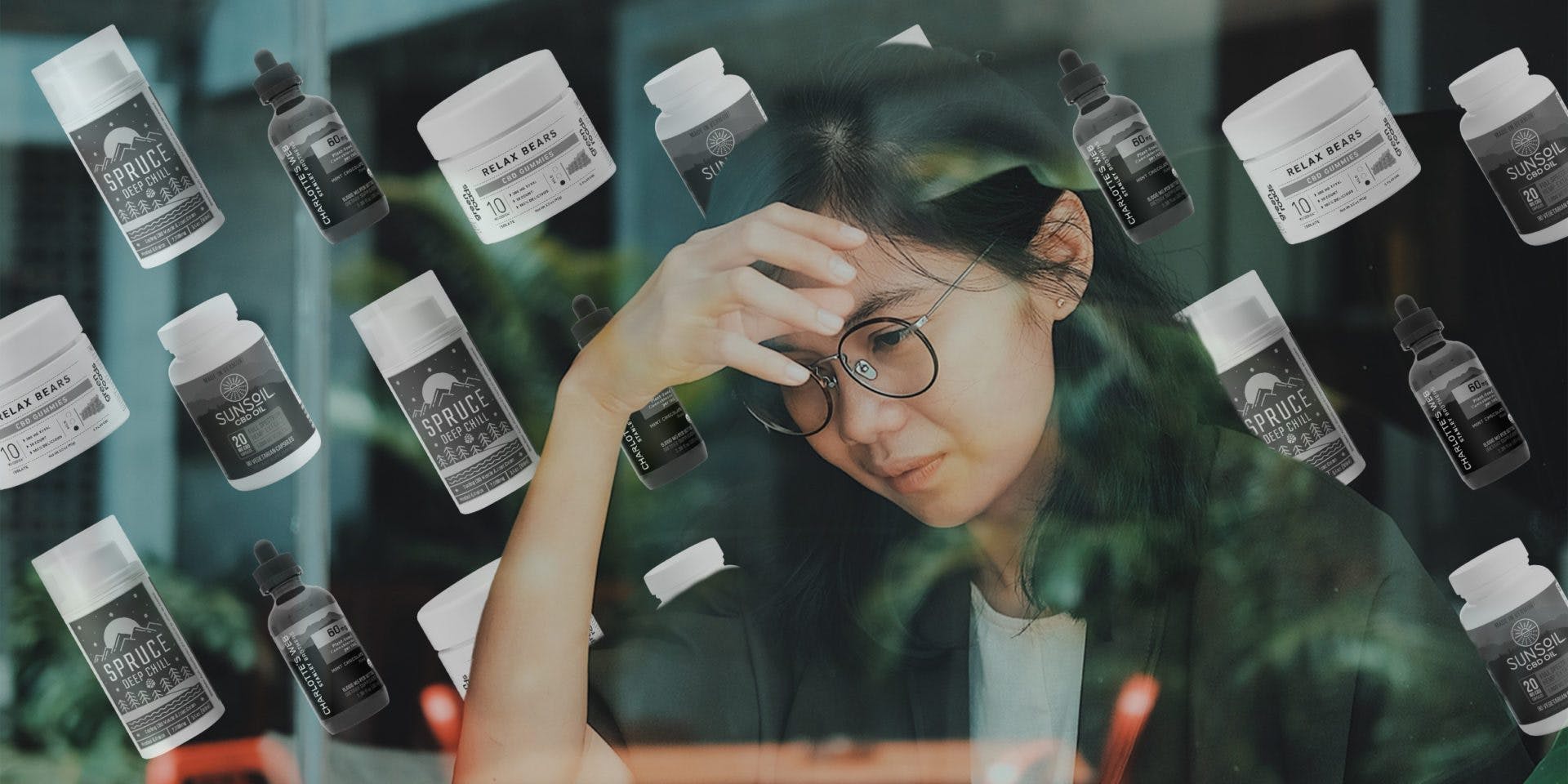How Does CBD Work?

Article written by

Tina MagrabiSenior Content Writer
Content reviewed by

Dr. Lewis JasseyMedical Director - Pediatric Medicine
Cannabidiol (CBD) is compound unique to the cannabis plant. CBD offers numerous potential health benefits, including reduction of pain and inflammation and mood-boosting.
However, the mood-boosting potential of CBD comes without the psychoactive high associated with tetrahydrocannabinol (THC). For this reason, CBD has become a popular and safe natural remedy for depression, anxiety, and other mood disorders.
In addition, CBD is a complex compound, as it interacts with various receptors in the human body in various ways. These interactions, along with legal issues on marijuana and CBD oil, have made CBD challenging to understand.
What is CBD?
CBD is one of at least 150 cannabinoids naturally found in the cannabis plant. As one of cannabis’ major phytocannabinoids, CBD accounts for up to 40% of the plant’s extract. CBD has few, if any, intoxicating effects for most people (though some have reported mild psychoactivity) and may even dampen the effects of tetrahydrocannabinol (THC).
CBD’s raw form in the plant exists as its precursor: cannabidiolic acid (CBDA). CBDA becomes CBD after aging or decarboxylation (heating). Knowing which cannabinoid receptors CBD affects (and remember, science doesn’t know precisely how, where, and why CBD works yet) is key to understanding its medical uses.
What Does CBD Do?
The first step to understanding CBD is understanding what your endocannabinoid system (ECS) does. The endocannabinoid system is an intricate network of enzymes, lipids, and receptors that most mammals possess. Our ECS is largely responsible for creating and maintaining homeostasis (balance) in the body.
The twentieth-century scientific discovery of the endocannabinoid system was a game-changer for human health. Scientists learned that cannabis binds to different receptors in the brain, working in tandem with the ECS to exert numerous health effects on:
- Mood
- Immune response
- Pain and inflammation
- Appetite
- Memory
These are just a few of the crucial functions that the ECS oversees. Indeed, even reproduction is involved in the endocannabinoid system’s functioning. It would be difficult to pinpoint a body function that doesn’t involve the ECS.
What does all of this mean for medical marijuana users? The discovery of the ECS and how cannabis binds to its various receptors means that medical marijuana may treat wide-ranging conditions. From cancer to epilepsy, the endocannabinoid system plays a vital role in keeping your health balanced.
Here are some ways CBD may connect with different receptors and exert therapeutic effects.
CBD and Epilepsy
One of the biggest breakthroughs in cannabis medicine is the Food and Drug Administration’s (FDA) 2018 approval of Epidiolex for severe forms of epilepsy. Epidiolex is the first non-synthetic cannabis drug to gain FDA approval to manage seizures in individuals with Dravet syndrome and Lennox-Gastaut syndrome, both serious forms of epilepsy.
The purified CBD in Epidiolex binds to different brain receptors to help manage and prevent epileptic seizures. Epidiolex is especially significant for its safety profile and possible usage for children with epilepsy.
Unlike synthetic cannabis-based medications like dronabinol, Epidiolex does not have the same side effects. Though rare, the most common side effects of patients treated with Epidiolex are fatigue, appetite loss, and diarrhea.
CBD and Mood Disorders
CBD binds to the 5-HT1A receptor, a serotonin receptor. Serotonin is a chemical messenger which is linked to our mood. CBD’s interaction with serotonin receptors may explain its effectiveness as an antidepressant, anxiolytic, and even a neuroprotective (brain-protecting) chemical.
See our pages on anxiety, depression, and post-traumatic stress disorder (PTSD) to learn more about how cannabis and CBD can help with mental health and mood disorders.
CBD and Pain Receptors
Research indicates that CBD has the potential to “desensitize” the TRPV1 receptor. The TRPV1 receptor helps to regulate our body temperature and is also a heat and pain-sensing receptor. This interaction gives CBD analgesic (pain-killing), antiemetic (nausea-beating), and seizure-beating properties.
Another reason CBD may have analgesic properties is that it is an allosteric modulator of μ- and σ-opioid receptors. This simply means that CBD changes how pain signals are processed. Allosteric modulators act like volume control, helping turn up or down how much the body listens to a particular signal.
Allosteric modulators attach themselves to sites other than the main receptor site (called “orthosteric modulators”). This interaction may also help explain CBD’s potential use in treating opioid addiction.
CBD and the Immune System
Both CB1 and CB2 receptors play an important role in immune system function. CB1 receptors are mostly found in the central nervous system, while CB2 receptors are generally in the peripheral nervous system.
CBD can suppress cytokine production, thereby reducing inflammation associated with immune response. The immunomodulatory effects of cannabinoids can be both a pro and a con, depending on a patient’s goals and current medication.
For example, if you are using immunotherapy for cancer, cannabinoids are contraindicated (i.e., they clash). Always consult your doctor to determine if CBD will interact with any other medications you are taking, whether prescription or over-the-counter.
CBD and the Brain
The NMDA receptor is a glutamate receptor important for neuroplasticity (flexibility of the brain to do something new, like learning a language) and memory retention. This gives CBD neuroprotective properties and potentially helps regulate brain functions like learning, memory formation, and mood. This interaction may also explain CBD’s anticonvulsive effects and its use as an antipsychotic.
There is a lot of complicated scientific theory and supposition behind these hypotheses. Still, it’s a very interesting area of research, and targeting the endocannabinoid system (ECS) could be the future of drugs and medications, especially considering cannabis’s safety and therapeutic profile.
CBD and the Liver
The liver is where most drugs are metabolized, meaning that CBD can inhibit the processing of many other drugs. This is why it is important to speak with a doctor before taking cannabis products if you are already using medications.
For example, those using anti-epileptic drugs (AEDs) and benzodiazepine-based medications will need to taper their use to prevent the buildup of dangerous levels of benzodiazepines in the blood. The CYP 450 enzyme also processes some antibiotics, so CBD can interfere with their metabolization.
The Entourage Effect
The entourage effect implies that CBD works better when other phytocannabinoids and terpenoids are present. CBD on its own may not be as effective, requiring higher doses or even ineffective for specific conditions. Combine it with a bit of THC (even in non- or low-psychoactive amounts) and the plant’s terpenes, however, and it features a variety of helpful uses.
However, many people turn to CBD to avoid getting high from THC. If your goal is to experience the benefits of cannabis without getting high, then pure CBD is right for you. But through the natural mechanisms of the entourage effect, cannabinoids and terpenes are more potent when used together.
CBD and THC: Do They Work Together?
Many believe CBD reduces the psychoactivity THC gives by blocking it in the body. THC and CBD work differently in the human body, making the “CBD blocks THC” theory too simplistic.
CBD competes and works with THC rather than blocking it across the board. THC is a CB1 receptor agonist, whereas CBD works indirectly on the CB1 and CB2 receptors. This means CBD does not block THC but rather modulates the effect THC has on cannabinoid receptors.
However, some animal studies show that CBD inhibits the conversion of THC to 11-OH-THC, meaning that CBD may have some inhibitory effect on THC. CBD may also prevent dopamine system disturbance, while THC overstimulates the ERK pathway, leading to dopamine system disturbance. How this mechanism works and at what dosage is yet to be determined
This interaction between THC and CBD also helps explain the different effects of cannabis strains. Cannabis varieties high in THC but with little-to-no CBD tend to be very psychoactive but with a shorter duration. THCV, which in low doses inhibits THC and increases its psychoactive effects in higher doses, is another example of the interplay between cannabinoids.
High-CBD/low-THC varieties may have a little psychoactive (or, more accurately, less intoxicating) effect but can still produce a sense of relaxation or balance, as CBD enhances anandamide signaling. High-THC/high-CBD strains may have some intoxicating effects lessened, but the duration may last longer. 1:1 THC:CBD ratios can be intoxicating in high doses, but many find that 1:1 ratios aren’t overwhelmingly psychoactive in low or medium doses.
The bottom line is that CBD and THC work together in complex ways. They are like two sides of a scale, balancing each other out when measured properly.
CBD Dosing
As with all forms of cannabis, starting low and slow is the best way to dose CBD. There are also several key factors to consider when dosing CBD:
- Your body weight
- Why you’re using CBD and what you hope to achieve
- Your individual body chemistry
- Previous experience with CBD and cannabis
- Your overall health
A qualified physician can help you understand how these factors interplay with how much CBD you need to dose. Figuring out the right dose also involves careful label reading on CBD products. Look for the specific concentration of CBD in each bottle of CBD gummies, pills, capsules, or oil you purchase.
Finally, ensure you use a genuine CBD product, not a cannabis product containing THC. Even CBD oils contain trace amounts of THC, but these levels are generally too low to cause psychoactive effects. The THC concentration must be 0.3% or lower to qualify as a CBD product.
Beginner CBD users might start with a dosage as low as 5 milligrams (mg) of CBD per day. More experienced CBD users might benefit from 50 mg of CBD daily, especially if using CBD to ease the pain. The differences in CBD dosing are vast, so consult a medical professional to ensure you get the right dose.
How Long Does It Take for CBD Oil to Work?
How long CBD takes to work largely depends on the dose and how you ingest it. Furthermore, the condition you seek to treat with CBD will also impact how long it takes for the cannabinoid to activate. For example, someone with a mild headache will probably experience the effects of CBD sooner than someone with chronic pain from multiple sclerosis (MS).
By method of ingestion, the effects of CBD will generally kick in after:
- 15 minutes for smoking, vaping, or sublingual (under the tongue) application
- One hour for topical CBD products
- Two or more hours for edible CBD products
The effects of CBD oil last for a brief period of between two to six hours. Many people use CBD multiple times throughout the day to maximize the effects.
To learn more about what CBD can do for you, contact the on-call physicians at Leafwell. We can help you quickly apply for a medical marijuana card from the comfort of your own home.
Get Your Medical Card
Connect with a licensed physician online in minutes.



